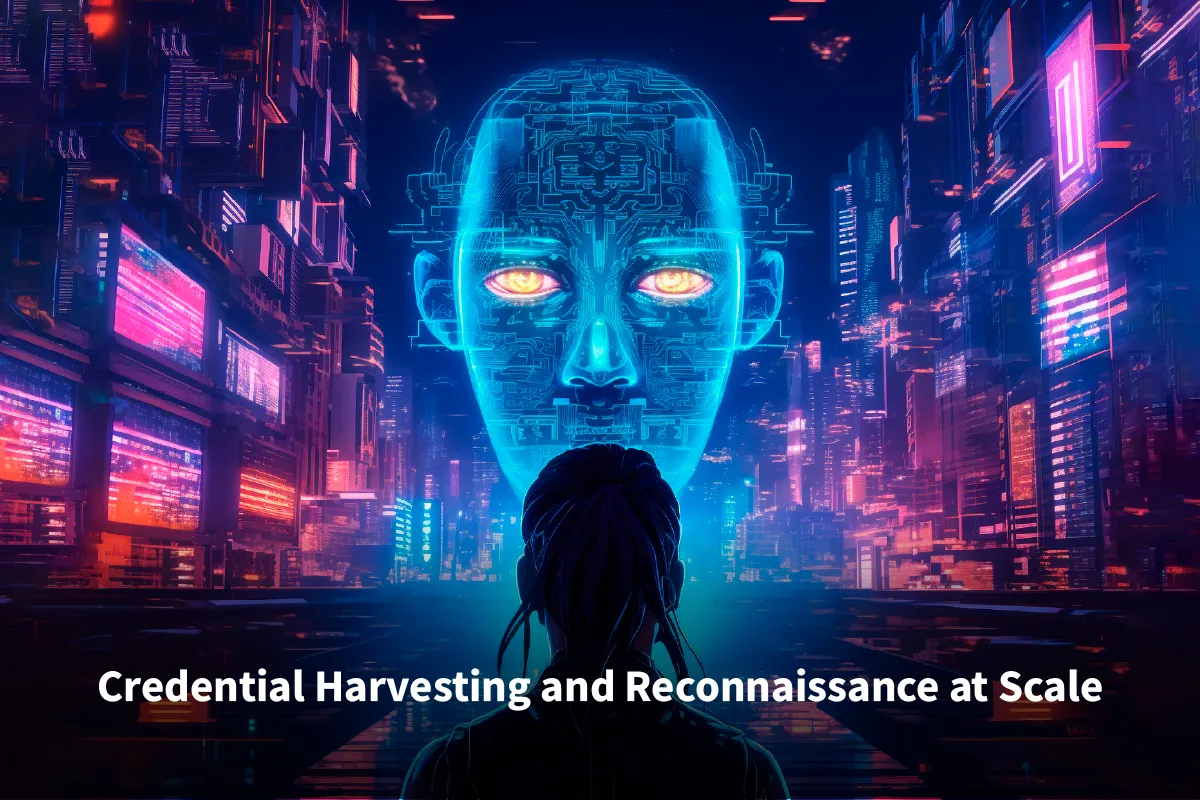Business leaders have always been impressed by Large Language Models (LLMs) and generative AI. You can see the productivity gains clearly. This includes writing great marketing copy and automating tricky customer service tasks. As we use these powerful tools more in our work, a dangerous threat appears. This threat is more harmful than traditional cyber risks. We are entering a new age of digital deception. Generative AI is quickly becoming a top tool for complex social engineering attacks. This poses a serious risk to company security, finances, and reputation.
Beyond Phishing 1.0
Remember the poorly spelled Nigerian prince emails? Those crude attempts at fraud now belong to a bygone era. Generative AI gives threat attackers access to tools that only nation-states or big criminal groups had before. This makes advanced deception available to more people. The main weakness is still human behavior, but the attack methods are now much more advanced.
The most immediate and pervasive threat lies in the evolution of phishing. Generative AI allows attackers to craft fake emails and messages that seem real. They can mimic internal communications or messages from trusted partners. Picture getting an urgent message from your CEO. It matches their writing style perfectly. It references a recent company event and even copies their unique quirks. An LLM creates all this in seconds. It uses public data such as earnings calls, press releases, and LinkedIn posts. These messages get past regular spam filters. Those filters look for common templates and grammar mistakes. They seem real and urgent. They want quick actions. This includes clicking a dangerous link, approving a fake payment, or sharing private info.
Also Read: Smart Logistics: How GenAI Is Powering Japan’s Next-Gen Supply Chain
According to IBM’s 2024 X-Force Threat Intelligence Report, phishing remains the top infection vector, accounting for 30% of all attacks analyzed. The addition of generative AI is expected to dramatically increase the success rate of phishing attempts due to personalization and believability.
Voice cloning adds another chilling dimension. Attackers can create a convincing copy of an executive’s voice. They just need a few minutes of audio from public sources. This could be interviews or presentations. Picture getting a frantic voicemail or a live call from your CFO. They demand an urgent wire transfer to prevent a crisis. Hearing a trusted voice can strongly affect us. When there’s urgency in the request, it makes us feel even more. This mix can easily cloud our judgment.
A 2023 report by McAfee found that one in four people globally have encountered AI voice scams, with 77% of those targeted losing money, often thousands of dollars.
CEO fraud causing multi-million dollar losses is a real issue now. With AI voice cloning, these incidents are happening more often and it’s alarming.
Deepfakes and Synthetic Media
The threat extends far beyond text and voice. GANs and advanced video tools can make very realistic ‘deepfake’ videos. Think about this: a fake video from a company leader shares a controversial policy change. This can lead to chaos inside the company and anger outside of it. A fake interview with a top executive spreads harmful lies and drops stock prices. Deepfakes can be used for targeted extortion or spreading false information. This often targets specific executives or board members. According to Gartner, by 2026, 30% of enterprises will have a dedicated team to combat misinformation and deepfake attacks, up from less than 1% in 2022.
Synthetic media attacks hit the core of trust. They damage trust in leadership, communications, and the information ecosystem. In today’s business world, reputation matters a lot. The risk of damaging it is very high. Finding the truth in AI-made fiction is a big challenge. It shakes stakeholder trust and opens the door to chaos.
Credential Harvesting and Reconnaissance at Scale

Generative AI also supercharges the reconnaissance phase of attacks. LLMs can search the internet and social media nonstop. They look at company websites and even data leaks. This helps them create detailed profiles of targets. These profiles show specific employees. They include their roles, responsibilities, reporting lines, projects, and personal interests. This intelligence helps attackers create precise spear-phishing attacks. They can also set up pretexting scenarios, like pretending to be IT support or a vendor. The ‘helpful’ chatbot on a fake internal portal answers employee questions. But it also collects login credentials without them knowing. This could all be powered by AI.
AI can automatically create many fake profiles on social media, such as LinkedIn. These synthetic ’employees’ or ‘industry experts’ gain credibility over time. They connect with real personnel and build trust. They launch their attack. This can include getting information, spreading malware, or enabling financial fraud. Automation allows campaigns to be larger and more lasting. This makes them more effective and harder to track than manual methods.
The Amplification of Misinformation and Brand Sabotage
The business risk isn’t confined to direct financial fraud or data theft. Generative AI can easily spread misinformation. This harms brand perception on a large scale. Cyber criminals can flood platforms with fake negative reviews. They can also create fake social media accounts to post harmful content. They can also create fake news articles. These articles spread harmful lies about products, finances, or leaders. The speed and volume of this disinformation are too much for old monitoring and response methods. Containing the narrative and repairing brand damage becomes exponentially more difficult and costly.
Mitigating the Invisible Threat
Dealing with AI-driven changes in social engineering needs a major shift in security strategy. Traditional, purely technical defenses are necessary but insufficient. The human element is now the main target. Our defenses need to reflect this fact.
Security awareness training must undergo a revolution. Forget simplistic modules about spotting typos. Employees need regular, practical training to identify the main signs of advanced AI deception. This includes vital training on checking strange requests. This is especially true for requests about money transfers or sensitive data. It applies no matter where they come from. Simulated phishing exercises need to change. They should use hyper-realistic AI-generated lures. This tests how well people can resist these advanced tactics. Building a culture of healthy skepticism and psychological safety is key. Employees should feel free to question and report issues without fear of backlash.
Technological controls remain crucial. Using strong email authentication methods like DMARC, SPF, and DKIM is crucial. They help combat domain spoofing effectively. AI-driven threat detection systems are essential. They use behavioral analytics to spot subtle changes. These changes in communication or user behavior can indicate a complex attack. Multi-factor authentication (MFA) is a key defense. It makes it much harder for attackers, even if they get the credentials. Always check financial transactions closely. This includes those made over calls or online. A quick call to a trusted number using another method can prevent many voice cloning scams.
Organizations should create clear policies for using public executive communications. They must also set up ways to verify unusual internal requests. This is important for requests that need urgent action or secrecy. Investing in media forensics tools to detect deepfakes is challenging. Still, it’s now essential for a solid security and communication strategy.
The Imperative for Vigilant Leadership

The rise of generative AI isn’t just a tech shift. It marks a huge change in the threat landscape. The ‘dark side’ of LLMs gives adversaries new tools. These tools change how companies think about security. The cost of doing nothing goes beyond data breaches. It now involves major financial fraud, serious damage to reputation, loss of trust from stakeholders, and an operational halt caused by false information.
Business leaders should not see AI just as a tool for productivity and innovation. Understanding its potential for weaponization is a critical component of modern risk management. Investing in security training that focuses on people is essential. Strong technical defenses, solid verification processes, and a strong security culture are all needed. It’s the cost of doing business in the era of smart machines.
The sophistication of AI-driven social engineering will only intensify. Attackers use the latest tactics. So, our defenses need to be just as adaptive, strong, and aware of human factors. The shadow in the machine is growing, and vigilance is our most potent weapon. Ignoring it is a luxury no responsible leader can afford. The time to fortify your human firewall is now.







